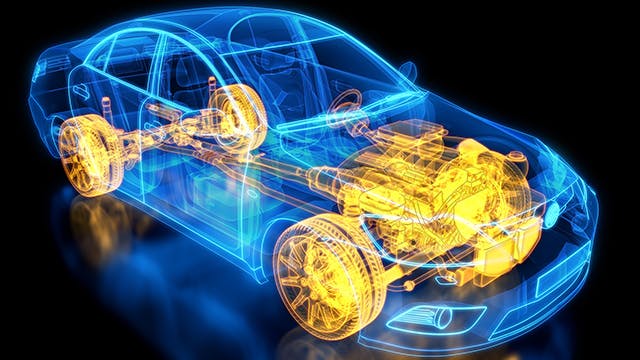The automotive industry is set to reduce its reliance on physical prototypes for testing noise, vibration, and harshness (NVH). Due to increasing vehicle diversity, test-based validation of component integration in all vehicle configurations is no longer feasible. Instead, the industry is looking to digitalize its development processes to save both development time and cost.
In this on-demand webinar, you will learn how to:
- Characterize source components in terms of 'invariant' loads (such as blocked forces) using a diverse range of direct and indirect methods
- Virtually couple components and predict NVH performance using Frequency-based Substructuring
- Solve typical practical challenges using insights from case studies on components such as tires, (electric) powertrains, compressors, and more
Embark on the industry shift towards virtual prototyping
Component-based Transfer Path Analysis (C-TPA) is a cornerstone technology for enabling the shift from physical to virtual prototypes. In C-TPA, each component of the vehicle is characterized independently using either test-based or CAE-based methods, and vehicle prototypes are then virtually assembled through the mathematical coupling of the component data using Frequency-based Substructuring.
This saves a huge amount of development time and cost by allowing engineers to simulate design changes on component-level, and then quickly assess the impact on vehicle-level targets in any number of vehicle configurations.
Reuse component data to simulate vehicle NVH performance
C-TPA distinguishes between source components, which generate operational excitations, and receiver components, which transfer excitations onto the NVH targets. Source components are modeled using 'invariant' loads, such as blocked forces, and impedances Frequency Response Functions (FRFs) at their output connection interfaces.
Likewise, receiver components are modeled using impedance FRFs and transfer sensitivities between their input and output connection interfaces. All this data is measured such that it is independent of the component's environment, reducing overall engineering effort by allowing infinite reuse in any future virtual vehicle assembly.
Redefine the OEM-supplier relationship using blocked forces
A long-term objective of the automotive industry has been the clear separation of responsibilities between OEMs and their suppliers. C-TPA provides the perfect basis for productive collaboration as all component data is generated independently and at any stage of development, either using test benches or CAE where appropriate. Invariant quantities such as blocked forces are ideal design targets as they guarantee that a desired vehicle-level NVH performance can be achieved.
Predict NVH in confidence using a validated technology
As C-TPA is rapidly gaining recognition in the automotive industry, newcomers to the technology can benefit from the rich amount of validation work that has already been performed for numerous component types.
These provide answers to important questions such as: how to maximize the accuracy and frequency range of the NVH prediction? What is the best method for obtaining invariant loads for a given component? What if the connection interface is inaccessible on the test bench? How to take into account the effect of (non-linear) soft mounts?
Relatore

Eric Sorber
Business Developer for Automotive NVH Testing
Eric Sorber graduated from the KU Leuven with a master's degree in electrical engineering. Eric has 10 years of experience in noise and vibration testing since joining Siemens in 2013. Currently, Eric is part of the business development team taking a full-time focus on the topics of Component-based Transfer Path Analysis and NVH prediction using virtual prototypes. In previous roles, he has also been active as an application and customer services engineer.
